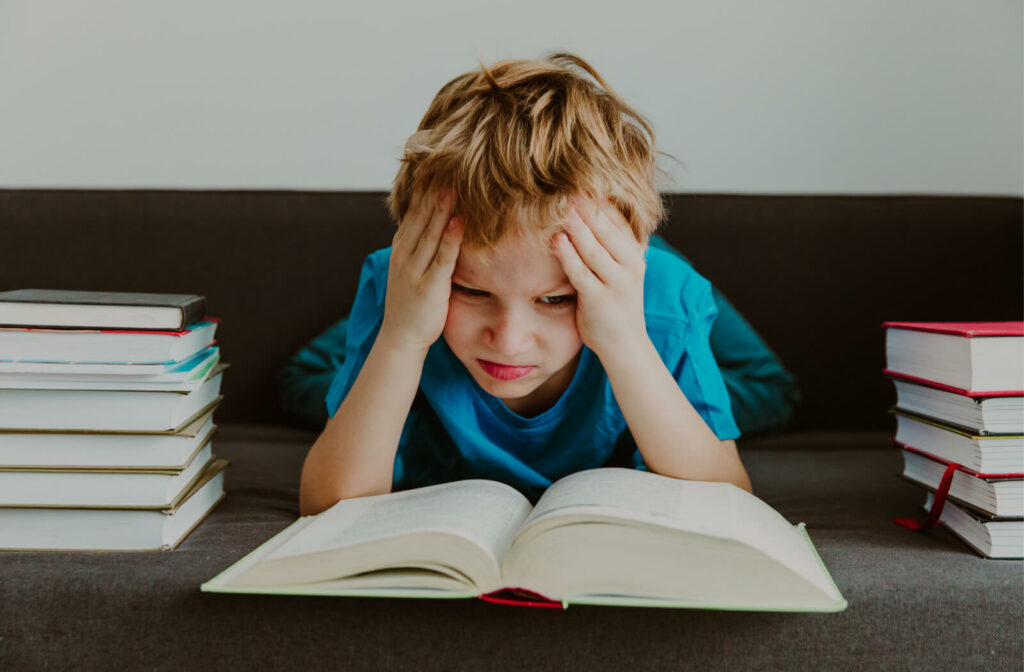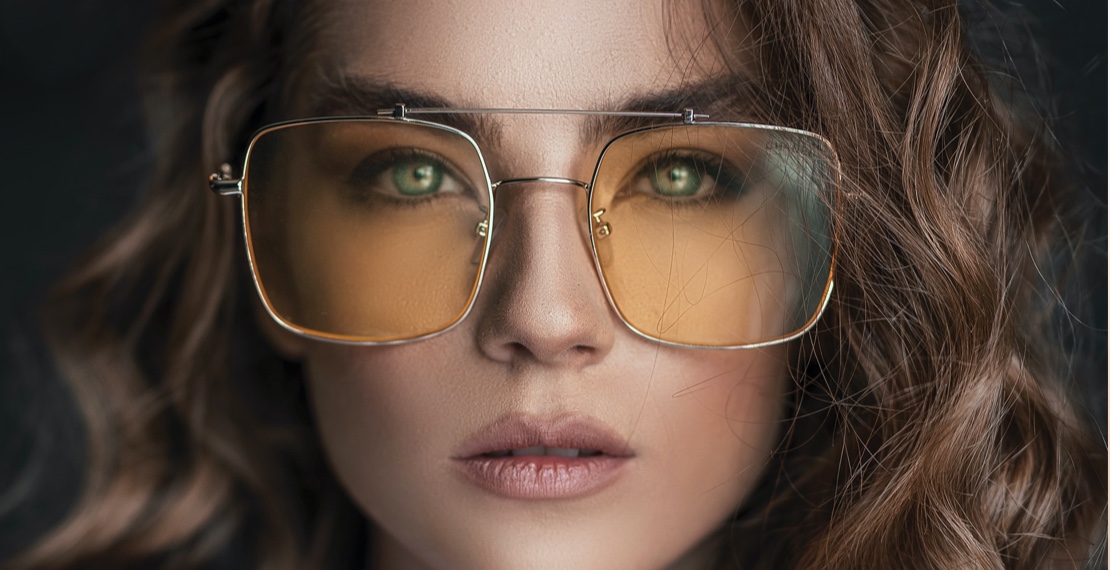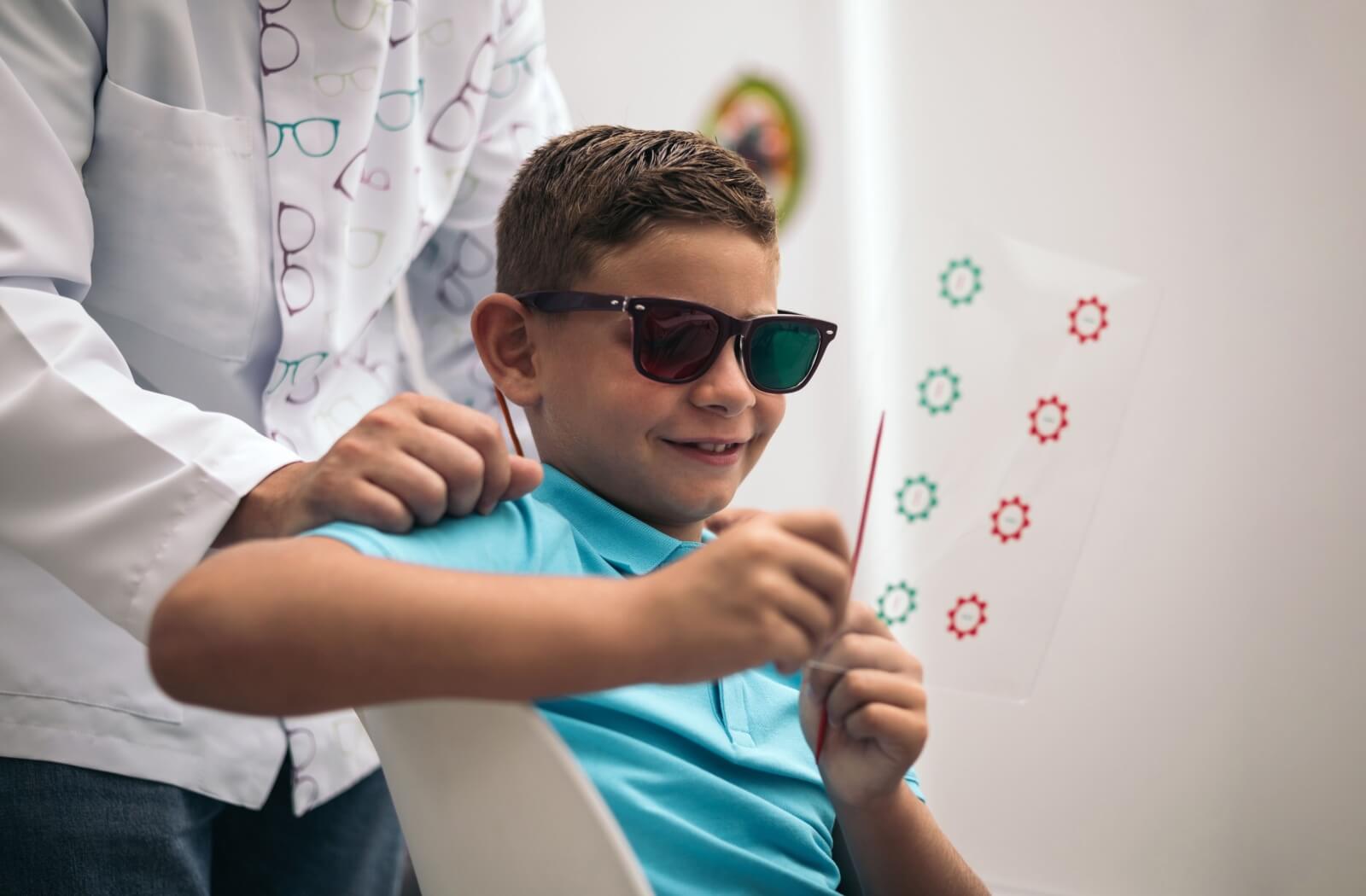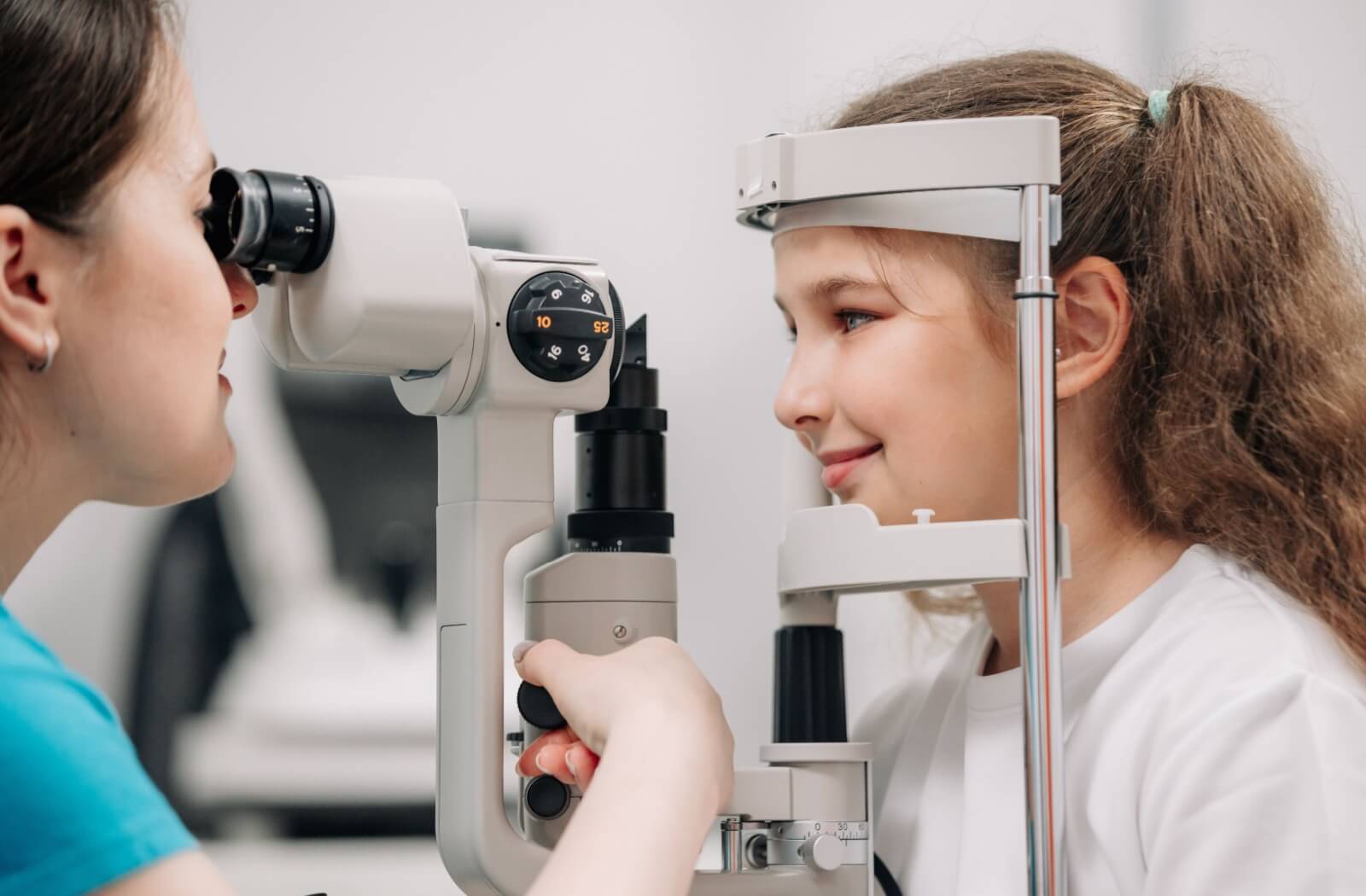Optometric Vision Therapy is a noninvasive, medical treatment for vision problems that can interfere with reading, learning and activities of everyday life. Our visual system is a complex neurological process that requires coordinated eye focusing, eye tracking and alignment to achieve clear, single vision. Patients who struggle with accommodative dysfunction (eye focusing), oculomotor dysfunction (eye tracking) and eye alignment (strabismus, amblyopia) can also have an additional learning disability that can interfere with the person’s overall well being and success.
A learning disability (LD) is a term that includes disorders that affect a person’s ability to understand or use spoken or written language, mathematics and coordination of movements. Optometric vision therapy is an effective treatment option for those with visual learning disabilities, conditions that make it challenging for individuals to process visual information properly, as well as those whose learning abilities may be affected by other vision disorders, such as amblyopia and strabismus.
What Is Optometric Vision Therapy?
Optometric vision therapy is an individualized treatment plan that aims to address visual performance problems that may affect a person’s overall quality of life. Vision therapy treatment can include prescribing lenses, prism, filters, low vision aids and focuses on visual performance (eye tracking, focusing, depth perception etc) instead of solely on whether the person has 20/20 visual acuity.
Vision therapy treatment is often associated with children who have conditions like strabismus and amblyopia, but adults can benefit too. Patients who have longstanding vision issues, sustain concussion, traumatic brain injury and/or decompensation of binocular vision can all benefit from optometric vision therapy. Fortunately, the human brain is wired to use both eyes together, simultaneously which allows us to see a clear, single image. The brain also has neuroplasticity, which is the ability to make new connections and learn something new. Fortunately for us, there is no time limit to the critical period to learning and making improvements. If neuroplasticity didn’t exist then we would not be able to learn new things or re-learn a skill that was lost (i.e. walking after injury).
In-office Optometric vision therapy includes specific activities, lenses, prisms in order to improve the eye-brain connection to improve clearer vision, eye movement control and more accurate visual processing.
What Visual Problems Does Optometric Vision Therapy Treat?
Vision therapy can treat a wide variety of visual problems that may lead to learning disabilities and help improve several visual skills, including:
- Double Vision
- Amblyopia (lazy eye)
- Strabismus (crossed eyes)
- Eye tracking and eye teaming
- Eye focusing abilities
- Visual Motion Sensitivity
- Depth Perception
- Eye-Hand Coordination
- Visual processing
- Sports vision
Eye Tracking Problems
Eye Tracking or Oculomotor dysfunction can affects how smoothly your eyes move across a page when reading. It can make it difficult to keep your place when reading, copy from the board or work on the computer. Patients who have oculomotor dysfunction often re-read lines of text, have reduced comprehension and have a low attention span for reading.
Amblyopia
Amblyopia occurs when one eye has less than 20/20 vision. Patients with amblyopia typically also have suppression (ignoring the image), reduced depth perception, reduced eye tracking and difficulty with reading and learning. Amblyopia can be refractive in nature or secondary to strabismus (misalignment of the eyes).
Strabismus
Strabismus occurs when one or both eyes are not in alignment, or pointing in the same direction. . Strabismus includes exotropia (eye turn out), esotropia (eye turn inwards) and hypertropia (eye turn upwards). Patients with strabismus can have the eye turn intermittently, constantly and can affect one or both eyes. Most patients with strabismus report that the eye turn is more noticeable when tired. Patients with strabismus can also have amblyopia (lazy eye) where 20/20 visual acuity does not develop. Strabismus is not a “muscle problem”, rather it is a lack of neurological control from the brain to coordinate the two eyes. By improving the communication from eye to brain, using specialized treatment in vision therapy, the strabismic eyes often realign providing improved cosmetic appearance. Convergence Insufficiency
Convergence insufficiency is a binocular vision dysfunction where the eyes do not correctly converge (move inwards) at near. Patients with convergence insufficiency appear to have straight eyes, but when they are looking up close, their eyes are no longer in alignment. Common symptoms include double vision, blurred vision, loss of attention/concentration and headaches. Binocular vision problems such as convergence insufficiency are quite common, affecting approximately 1 in 5 school aged children. Relying solely on testing visual acuity where we are assessing clarity of vision and not binocular function is a reason why binocular vision problems are often overlooked.
Understanding Learning Disabilities
Learning disabilities are neurological conditions that affect a person’s ability to acquire, store, process, or produce information.
Not all learning disabilities are visual, but they may be related to visual conditions. It is important to understand that a person may have a visual problem and a learning disorder as they are not mutually exclusive. Some common learning disabilities that have differing potential causes and symptoms include dyslexia (difficulty with reading), dysgraphia (challenges with writing), and dyscalculia (difficulty with math).
What Are Visual Learning Disabilities?
Visual learning disabilities are conditions that affect the ability to interpret and understand visual information properly. Children or adults affected by visual learning disabilities may have difficulty recognizing letters, numbers, shapes, colors, or even specific words when reading.
Reading, writing, and other visual learning tasks can be a significant source of frustration and stress for people with visual learning disabilities. Optometric vision therapy can help address delays in visual processing skills that are required for comprehension. Those skills include: visual spatial skills (laterality and directionality), visual discrimination, visual form constancy, visual memory, sequential memory and figure ground skills. As mentioned previously, vision therapy also addresses deficiencies in the areas of eye tracking, eye teaming, and eye focusing ability to read, write, and learn.
Traditional Approaches to Learning Disabilities
Traditionally, interventions for learning disabilities involve educational strategies tailored to the individual’s specific challenges. These may include personalized instruction, classroom accommodations, individualized educational program (IEP), the use of assistive technologies, and specialized teaching methods.
While these approaches can be effective, they don’t always address the full spectrum of issues that individuals with learning disabilities may face. By treating the underlying visual problem, this gives the person the “tools” to be more efficient for not only school but everyday life.
If you suspect that you or someone in your life has a vision problem that could be interfering with reading, learning or quality of life, the first step is to schedule a comprehensive eye examination in order to assess not only eye health, but function.
Enter Optometric Vision Therapy
The current research shows that there is a common link between learning disorders and vision disorders and that vision therapy is a treatment option for some people.
Since the eye is a complex organ and an extension of the brain, there are several different types of eye doctors that specialize in the different aspects of vision. Optometrists prescribe glasses, contact lenses and treat disease. Optometrists, like myself who are board certified in Optometric Vision Therapy and Rehabilitation (FCVOD), specialize in the functional aspect of vision and emphasize treatment for patients who have limited or reduced vision.
One comment I hear from other medical providers who are not as familiar with the functional aspects of the visual system, is that vision therapy “doesn’t work” and there are no double blind studies that support such treatment. A double blind study is one where neither the patient nor the administrator know which study group they are in. This prevents bias regarding treatment. When discussing therapies – and this includes vision therapy, occupational therapy, physical therapy and speech therapy amongst others, in order for improvement and change to occur, the patient must be engaged in the activity and fully participate for those new connections and neurological changes to occur. I think we can all agree that physical therapy would not be very effective if I weren’t to participate in my therapy session or if I didn’t do the home activities assigned to me each week.
By arranging conditions for the brain to learn how to coordinate right and left eyes, improve peripheral vision and transfer those visual skills from conscious to unconscious, the patient can find relief of double vision, blurred vision and reduced depth perception that glasses alone cannot completely treat.
As an optometrist who specializes in vision therapy, what I find most commonly is that both parents and patients alike do not understand the cause of theirs or their child’s ongoing symptoms. The human brain is a complex neurological system where the sense of vision is the “boss”. The primary function of vision is directive action. I always tell my patients that when vision is operating well it will enhance their life and when it is not, symptoms will arise.
The truth is that modern medicine does not support the functional aspect of our overall health. We see this in other aspects with the rise in pharmaceuticals, poorer quality and access to whole foods, sedentary lifestyle, etc. As a society everyone is being conditioned into thinking that everything (including vision problems) can be fixed instantly. The truth is, when we start at the foundation of the condition we can make more profound changes for the patient that improve everyday life.
If you or your child is struggling with a learning disability, the first step is to schedule a comprehensive eye examination to evaluate both the health and visual performance. With the correct diagnosis, treatment and support, the patient will be able to manage their learning disability and reach their full potential.


























